

Energy Investing For Dummies
Published by: John Wiley & Sons, Inc., 111 River Street, Hoboken, NJ 07030-5774, www.wiley.com
Copyright 2013 by John Wiley & Sons, Inc., Hoboken, New Jersey
Published simultaneously in Canada
No part of this publication may be reproduced, stored in a retrieval system or transmitted in any form or by any means, electronic, mechanical, photocopying, recording, scanning or otherwise, except as permitted under Sections 107 or 108 of the 1976 United States Copyright Act, without the prior written permission of the Publisher. Requests to the Publisher for permission should be addressed to the Permissions Department, John Wiley & Sons, Inc., 111 River Street, Hoboken, NJ 07030, (201) 748-6011, fax (201) 748-6008, or online at http://www.wiley.com/go/permissions .
Trademarks: Wiley, For Dummies, the Dummies Man logo, Dummies.com, Making Everything Easier, and related trade dress are trademarks or registered trademarks of John Wiley & Sons, Inc., and may not be used without written permission. All other trademarks are the property of their respective owners. John Wiley & Sons, Inc., is not associated with any product or vendor mentioned in this book.
Limit of Liability/Disclaimer of Warranty: while the publisher and author have used their best efforts in preparing this book, they make no representations or warranties with respect to the accuracy or completeness of the contents of this book and specifically disclaim any implied warranties of merchantability or fitness for a particular purpose. no warranty may be created or extended by sales representatives or written sales materials. The advice and strategies contained herein may not be suitable for your situation. you should consult with a professional where appropriate. neither the publisher nor the author shall be liable for damages arising herefrom.
For general information on our other products and services, please contact our Customer Care Department within the U.S. at 877-762-2974, outside the U.S. at 317-572-3993, or fax 317-572-4002. For technical support, please visit www.wiley.com/techsupport .
Wiley publishes in a variety of print and electronic formats and by print-on-demand. Some material included with standard print versions of this book may not be included in e-books or in print-on-demand. If this book refers to media such as a CD or DVD that is not included in the version you purchased, you may download this material at http://booksupport.wiley.com . For more information about Wiley products, visit www.wiley.com .
Library of Congress Control Number: 2013942774
ISBN 978-1-118-11641-8 (pbk); ISBN 978-1-118-22430-4 (ebk); ISBN 978-1-118-26254-2 (ebk); ISBN 978-1-118-23323-8 (ebk)
Manufactured in the United States of America
10 9 8 7 6 5 4 3 2 1
Introduction
E nergy affects every single human endeavor. Its at the heart of everything people do. From wood to whale oil to the modern forms of energy you see today, each generation has needed more energy and looked for new ways to get it. Today, supplying energy to a growing global population is one of the largest and most valuable industries in the world. Valued at around $7 trillion, the global energy industry is responsible for 10 percent of the worlds annual gross domestic product (GDP).
Energy powers your car, your house, and your phone. It moves people and goods across oceans and continents. It has created cartels, started wars, and produced family fortunes. No person or company is isolated from energy implications.
Because of constant and growing demand, energy makes for a great investment. It historically outperforms the market. Over the past 15 years, for example, a well-managed, broad-based energy fund returned 400 percent more than the Dow Jones Industrial Average. Energy prices havent slouched, either, as you undoubtedly see at every gas station marquee. For these reasons, retail investors have taken an extremely strong interest in energy investing.
But the energy market is complex and has many levels. It encompasses multiple fuel sources, commodities, companies, and funds. The goal of Energy Investing For Dummies is to help you understand and successfully invest in all the various parts of this market.
According to the International Energy Agency, the world needs to cumulatively invest $37 trillion in the global energy supply system to replace aging infrastructure and keep pace with rapidly growing energy demands. Using this book, youll prepare yourself to maximize the investment potential of this massive industry while avoiding its pitfalls and discovering how all its parts work together.
About This Book
My goal in writing Energy Investing For Dummies is to present you with an all-encompassing guide to the worlds energy markets and to give you the data and tools you need to profitably invest in them. You dont have to speculate on crude oil prices to be an energy investor. Today, thanks to easy retail access to the market and exchange-traded funds (ETFs), investing in niche sectors of the energy market is easier than ever. You can buy individual companies, funds that hold groups of companies, or tradable instruments that represent a commoditys price. And you can do this across multiple types of energy sources, from oil and gas to solar and wind, and everything in between. My aim is to give you a foundation of knowledge to feel confident investing in all of them while using simple language and real-world examples to demystify what can certainly be viewed as a mystifying topic.
Anyone who has tried to deconstruct the energy industry on his own realizes how many variables there are. Terms like barrels, therms, kilowatt-hours, reserves, capacities, and more can frighten off or confuse even seasoned investors. This book explains all these terms and more in simple language so you can feel confident in your understanding and ability to invest in all energy sectors.
Here are some of the energy investment concepts, techniques, and strategies you find in this book:
 Getting in tune with the crude oil market: Oil prices have vast implications for everyone. But what drives them? Knowing where the worlds oil comes from, which countries use the most of it, how to get it, and how the industry is adapting to continually harder-to-get resources is critical to being able to gauge what makes oil prices tick and how to know when theyre over- or undervalued. See how all these pieces come together in .
Getting in tune with the crude oil market: Oil prices have vast implications for everyone. But what drives them? Knowing where the worlds oil comes from, which countries use the most of it, how to get it, and how the industry is adapting to continually harder-to-get resources is critical to being able to gauge what makes oil prices tick and how to know when theyre over- or undervalued. See how all these pieces come together in .
 Capitalizing on commodities without contracts: You no longer need a broker to profit from moves in commodity prices. Until recently, the only way to invest in commodity prices directly was to buy contracts on a futures exchange. For oil, this requires buying at least 1,000 barrels at a time. Today, exchange-traded funds (ETFs) track the price of commodities. You can buy and sell these funds just like a stock to profit from moves in the price of crude oil. I cover how its done in .
Capitalizing on commodities without contracts: You no longer need a broker to profit from moves in commodity prices. Until recently, the only way to invest in commodity prices directly was to buy contracts on a futures exchange. For oil, this requires buying at least 1,000 barrels at a time. Today, exchange-traded funds (ETFs) track the price of commodities. You can buy and sell these funds just like a stock to profit from moves in the price of crude oil. I cover how its done in .
 Realizing that traditional fuels encompass a global market: Youve probably heard that theres a war on coal, but this really only applies to the developed nations of North America and Europe. Emerging markets, especially in Asia, will continue to rely on coal as a primary energy source for decades to come. In 2035, the world will still be getting one-third of its energy from coal, though there will be a shift in which countries use the most of it. You can find out how to use coals continued dominance and shifting demographics for profit in .
Realizing that traditional fuels encompass a global market: Youve probably heard that theres a war on coal, but this really only applies to the developed nations of North America and Europe. Emerging markets, especially in Asia, will continue to rely on coal as a primary energy source for decades to come. In 2035, the world will still be getting one-third of its energy from coal, though there will be a shift in which countries use the most of it. You can find out how to use coals continued dominance and shifting demographics for profit in .

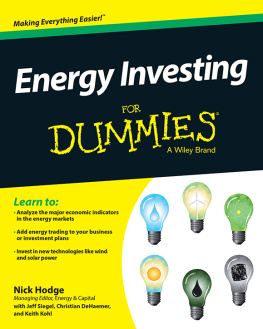


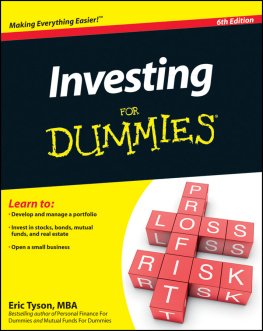
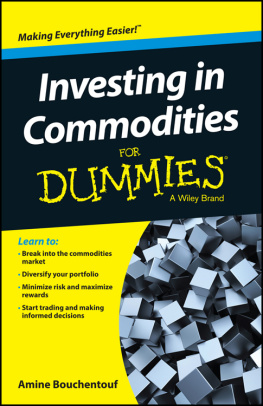
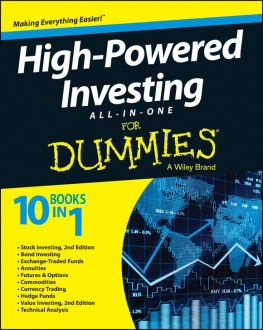
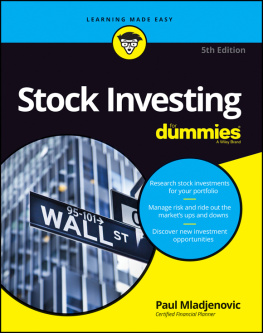

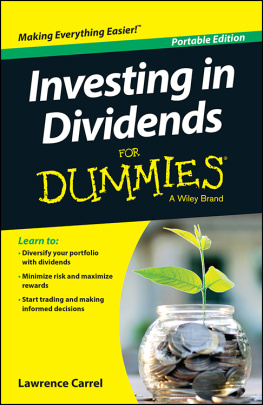


 Getting in tune with the crude oil market: Oil prices have vast implications for everyone. But what drives them? Knowing where the worlds oil comes from, which countries use the most of it, how to get it, and how the industry is adapting to continually harder-to-get resources is critical to being able to gauge what makes oil prices tick and how to know when theyre over- or undervalued. See how all these pieces come together in .
Getting in tune with the crude oil market: Oil prices have vast implications for everyone. But what drives them? Knowing where the worlds oil comes from, which countries use the most of it, how to get it, and how the industry is adapting to continually harder-to-get resources is critical to being able to gauge what makes oil prices tick and how to know when theyre over- or undervalued. See how all these pieces come together in .